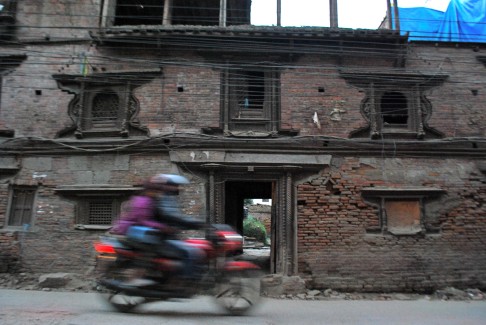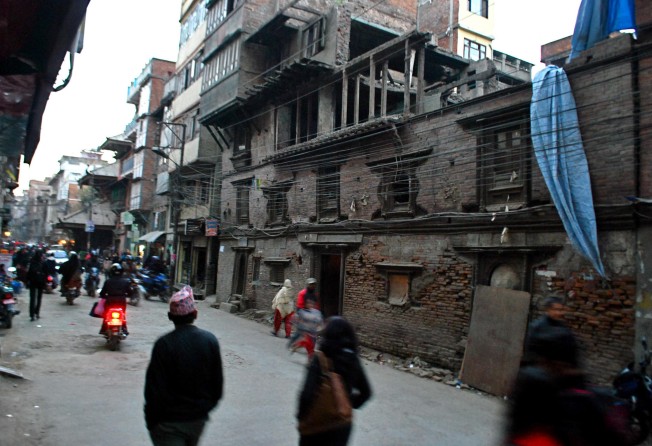
Conservationist strives to save Kathmandu's architectural heritage
Historic buildings are disappearing to make way for modern structures, but one conservationist is striving to slow their demise

When Chandan Shrestha discovered that a 200-year-old house in his Kathmandu neighbourhood was being demolished and replaced by a concrete structure, he intervened before it vanished like many of the other heritage buildings in Nepal's capital.
After he alerted the country's Department of Archaeology, it managed temporarily to stop the construction in the historic Naradevi area until the homeowner agreed at least to restore the facade of the house in its original form.
The house, part of the Baidya Chowk courtyard, minutes away from the tourist hub of Thamel, illustrates the city's architecture and craftsmanship and is among Kathmandu's quickly disappearing old quarters.
Most old houses in the area have been rebuilt, and the remaining ones are squashed amid the new multi-storey buildings. Their masterfully crafted wooden windows and doors are covered in dust, the artwork obstructed by the street's utility wires.
"These houses have been totally transformed," said Shrestha, who is campaigning to prevent more such damage being done. "People are destroying their heritage."
The areas around Kathmandu Durbar Square, like Naradevi, reflect the conflict between the old and the emerging metropolis. While some ancestral homes in these prime neighbourhoods are crumbling, others have been reconstructed for commercial purposes with no trace of the traditional aesthetics.
While houses with architectural, historical and cultural significance are required to get the Department of Archaeology's approval before demolition, the lack of definite provisions regarding private houses under the Ancient Monument Preservation Act and absence of authentic documentation pose a challenge to conservation efforts.
The country also lacks techniques to determine the actual age of the house, making it difficult to enforce the laws, said Shriju Pradhan, chief of Kathmandu Metropolitan City's heritage conservation section. The past decade has seen a surge in such demolitions along with the illegal sales of wooden artefacts from the houses, she said.
"Homeowners are also frustrated now," Pradhan said. "There is no guidance from the city [government] or Department of Archaeology. There is also no incentive from the government's side, which makes it difficult to encourage people to retain the traditional style."
While Ishwor Man Tuladhar, owner of the house at Baidya Chowk, was persuaded to restore the original facade, he was critical of the government's order. He said it was expensive to restore the house in its original form and officials could not expect families to live in a traditional way.
"I have agreed to preserve [it], and this could send a positive message to others," Tuladhar said. "But I'm finding it financially difficult to complete the construction."
Lately, tourism entrepreneurs, especially around Patan and Bhaktapur, have restored their ancestral homes, using the space as heritage hotels and restaurants. City officials believe this could promote traditional architecture as well as generate revenue for the landlords.
Sudharshan Raj Tiwari, urban historian and professor at the Institute of Engineering, said people were not able to understand the merits of traditional construction.
He also blamed the engineering community for not promoting "heritage-compatible" architectural prototypes while reconstructing and redeveloping old houses.
"There should be a compromise between development and conservation," Tiwari said.
"In residential houses, interiors can be changed to meet modern lifestyles."
In the past few months, conservation enthusiasts such as Shrestha have been helping authorities locate houses like the one at Baidya Chowk.
He is also part of Kathmandu Metropolitan City's volunteer group, which is making residents aware of their properties' cultural and architectural values.
"The main problem is that there is no ownership pride," Shrestha said. "They either ignore it or just aren't aware of their heritage's value."